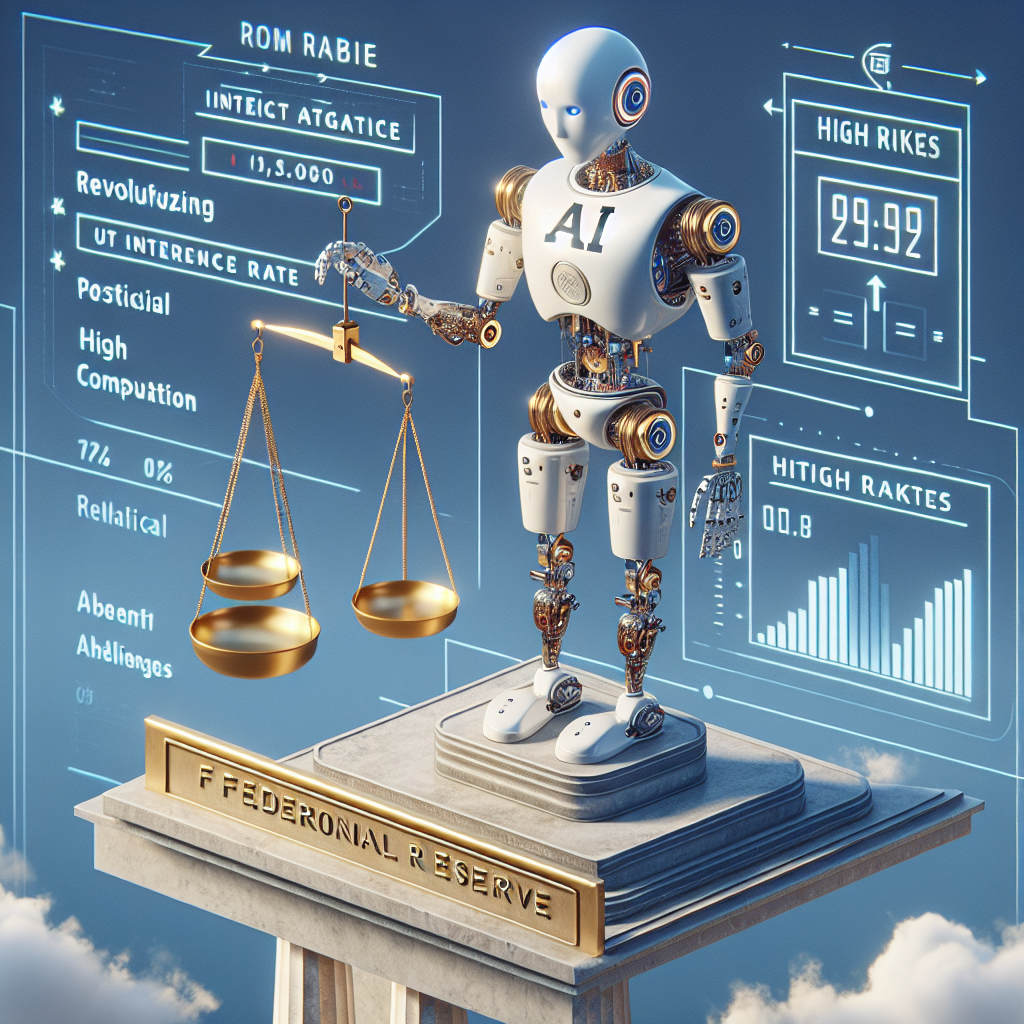Would the Fed Ever Rely on AI to Decide Interest Rate Moves? The Risks Are High
The discussion around the potential integration of artificial intelligence (AI) in the United States Federal Reserve’s (Fed) monetary policy decisions is a fascinating yet daunting prospect. While advancements in AI technology could provide real-time insights and enhance decision-making processes, the risks associated with allowing AI to steer such critical economic policies should not be underestimated.
The Complexity of Fed Decision-Making
The Federal Reserve is the world’s most influential central bank, crafting policies that resonate well beyond U.S. borders. With significant responsibilities, including managing inflation, controlling unemployment, and ensuring economic stability, the Fed’s decision-making process relies on a complex combination of data analysis, economic models, and expert discussions. Now, envision a scenario where this nuanced interplay is influenced by sophisticated AI systems, capable of processing vast datasets in the blink of an eye.
The Allure of AI in Forecasting
Picture AI algorithms that can quickly simulate an array of economic scenarios—ranging from trade conflicts to natural disasters—providing the Fed with real-time forecasts of potential economic ramifications. The integration of generative AI could significantly enhance the quality and precision of the Fed’s economic models. Such tools could offer more up-to-date information on employment trends and sector-specific impacts, allowing human experts to refine their monetary policy judgements.
Furthermore, research has shown that advanced-language models like ChatGPT can accurately forecast economic trends when prompted with narrative scenarios. This innovative capability could transform the Fed’s approach to economic forecasting and facilitate data-driven discussions among policymakers.
Risks and Challenges of AI in Monetary Policy
However, the prospect of integrating AI directly into monetary policy decisions raises significant risks. The potential for a flawed AI model to miscalculate economic scenarios or produce inaccurate forecasts poses threats to the stability of the global financial system. Moreover, the opaque nature of many AI systems—often referred to as “black boxes”—creates challenges for transparency and accountability, two core principles critical to the Fed’s operations.
Understanding the output of AI systems and justifying decisions based on these analyses becomes paramount. A model that is difficult to interpret makes it challenging to establish accountability if it leads to wrong decisions. In such cases, understanding whether the responsibility lies with developers, data curators, or implementing institutions becomes a complex issue.
Accountability and Bias in AI Models
Beyond technical risks, ethical considerations also play a significant role. Bias in AI models has the potential to exacerbate economic disparities if not monitored carefully. The progressive adoption of AI technologies also raises concerns about cybersecurity, as these systems could become targets for malicious actors, threatening the integrity of central banking decisions.
Additionally, the possibility of AI generating “hallucinations”—plausible but entirely fabricated responses—could be particularly detrimental in monetary policy applications. As the stakes are high in central banking, ensuring the accuracy and reliability of information used in decision-making is essential.
The Importance of Human Judgment
Given these considerable challenges, striking the right balance between AI insights and human judgement becomes critical. While AI can enhance capabilities, the final decisions in monetary policy should remain with human experts, who possess an intuitive understanding of economic behaviors and broader societal needs.
The Fed’s Cautious Approach to AI Integration
In light of these complexities, central banks must approach AI with cautious optimism. The Fed acknowledges the need to explore the potential benefits of AI technology responsibly. As part of this cautious exploration, the Fed is investigating AI through an “incubator” program focused on testing this technology for real-world challenges.
This initiative reflects the Fed’s commitment to exploring the practical use of AI while being mindful of the associated risks. Although the integration of AI into its operations appears inevitable, the role AI will play in core monetary policy decisions requires careful consideration.
Conclusion
In conclusion, while generative AI holds the promise of advanced data processing and greater insight into economic scenarios, the integration of such technology into the Federal Reserve’s monetary policymaking must be approached with caution. Establishing robust frameworks for AI ethics and governance is essential to ensure that technological advancements support, rather than replace, human judgement. Ultimately, sound monetary policy relies not just on data but also on real-world experience and understanding.

